Welcome to Horus Heresy Tactica, our series that provides a deep dive in a specific mechanic, interaction or aspect of play in Warhammer: the Horus Heresy.
In this week’s instalment of our list building mini series we look at what properties units have that are significant, what roles these serve in a list, and how many of each you want in your army.

Unit Properties
Different units in Horus Heresy serve different purposes and it is important to be able to assess what different units can do and how you can use them. When you’re building your list there are certain components you need to make sure are included (in certain amounts) to be able to take on what your opponent brings. Rather than dividing units into different “types” let’s look at the different notable properties units can have. First up, their defensive capabilities:
- A 4+ or worse Save: Restricted to Auxilia, Mechanicum and Scout Squads models with a 4+ save are easy to churn up and kill on mass. A 5+ or even 6+ save is worse, of course, but 4+ is really the break point. Heavy Bolters and Autocannons rip through your armour like it’s made of tissue.
- A 2+ Save: The magic number for saving throws in Horus Heresy is 2+ because you’re, inevitably, comparing to the marine baseline of 3+, and so little AP2 exists in the game compared to other values. Also a 2+ save is just statistically so good at protecting a unit – anything with a 2+ save needs dedicated attention to take down, either with vast weight of fire or with high quality shooting or melee.
- An Invulnerable Save: If someone crashes through your armour then an invulnerable save is going to make a huge difference. However there’s a massive quality division here – a terminator squad with storm shields with a 3+ invulnerable save is an order of magnitude harder to kill than one with a 5+ invulnerable save.
- Damage Mitigation: Generally, though not always, better than an Invulnerable Save, Damage Mitigation is a fantastic buff to survival. Shrouded is better than FNP because it doesn’t switch off to Instant Death, but take any form you can get.
- Toughness 3: At toughness 3 you’re dying almost immediately to anything. Heavy Bolters are wounding on a 2+. If you have more than 1 wound then you’re going to Instant Death to Strength 6. It’s a rough old time for Toughness 3 models.
- Toughness 5+: More toughness = good, but really the break point is Toughness 5, especially on multiwound models. That’s because if you’re T5 (or treated as T5 for the purposes of Instant Death) then you can’t be instant deathed by the vast majority of heavy weaponry, including Power Fists wielded by marines, lascannons, all kinds of stuff.
- 10 wounds or less: If the entire unit has 5 wounds or less it’s going to be pretty vulnerable no matter what armour or toughness it has (with the exception of Dreadnoughts who other properties make up for this). A 10 marine tactical squad, a 5 marine veteran squad… there aren’t many wounds to chew through there. A Centurion on their own is dead very fast, just because it only takes a couple of failed saves to down them.
- 20 wounds or more: On the other end of the scale, any unit with 20 wounds or more is a pretty tough one. Even if they have terrible armour, etc it will usually take time to actually kill them more. Even large units of Auxilia stand up to some fire because they have the numbers to.
- Eternal Warrior: Restricted now to Primarchs, Sigismund, Custodes Tribunes and for some reason Armigers, with Dreadnoughts and a few other models getting a limited version (taking 1d3 wounds rather than suffering instant death), Eternal Warrior is an enormous buff to survival for your multiwound models who are going to be the target of serious attacks
- AV 12 or below: For vehicles this is the equivalent of a 4+ save. Sure you’ll survive a bunch of hits from very light weapons, but getting shot with anything vaguely anti-tank will put a real dent in anything AV12. This is in part why Lance weapons (that set AV to 12) are so good.
- AV 14 or above: This is the golden spot, the equivalent of a 2+ save for vehicles. Here you’ll shrug off a lot of lascannon fire and even stand up to melta with some regularity. Once you hit AV15 (or equivalent, with a flare shield) then you’re really into the stratosphere and untouchable by a huge amount of firepower.
- Leadership buffs: The best buff of this kind is Fearless, which means the unit cannot be pinned and won’t fail morale ever. Stubborn and similar abilities are also very useful. These don’t stop you taking casualties, but stop the unit being as badly impaired when they do.
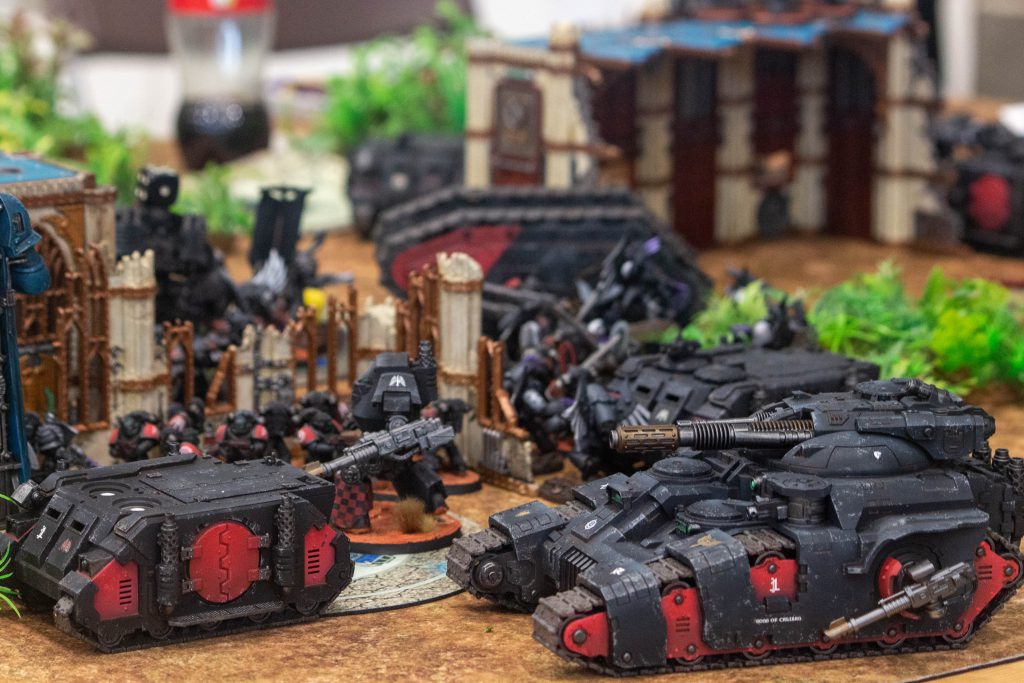
Now let’s look at offensive output:
- Massed anti-infantry Attacks: Any unit capable of putting out more than about 30 low-powered attacks (s5 or less, ap3 or worse) can be considered to have massed anti-infantry attacks. It’s not going to do much to specialist or heavy targets, or to vehicles, but you can use it to wear down or eliminate lighter troops – anything that isn’t Toughness 5+, and doesn’t have a 2+ save.
- Anti-Heavy Attacks: Any unit capable of putting out more than about 5 high-powered attacks (s6 or more, at least some ap2) can be considered anti-heavy. The higher the strength and the more attacks the better, but the ap2 is the key part – all the toughest non-vehicle units in the game have a 2+ save and you need to punch through it to be effective. S8 is the real golden point for anti-heavy attacks, as it doubles out toughness 4 models (thus making those wounds Instant Death) and also wounds a Contemptor on a 3+ and a Leviathan on a 4+ (the toughest things you’re likely to run into).
- Anti-Tank Attacks: Any unit capable of putting out 2 or more anti-tank attacks can be considered a good source of anti-tank attacks. Anti-tank attacks are those with at least Strength 7, preferably Strength 8 or more. Other properties matter less (and so weapons that aren’t good anti-heavy weaponry can be good against vehicles), but special rules like Lance, Sunder and Armourbane can be a big boost, and ap 1 or 2 is helpful to give a chance for the target to explode. To some extent volume of anti-tank attacks can make up for ap1 and 2 but the fact that a single multi-melta has a chance to just kill a vehicle in a single shot is very powerful.
- Pinning: If a weapon has the pinning rule, or the unit otherwise can give an attack pinning, it is useful in its own way. We cover this in detail in our article on pinning.
- WS3 or below: A unit with ws3 or below is going to struggle in assaults no matter what weapon it is wielding. A Weapon Skill 3 or less unit is almost always one you want to avoid fighting with – hitting on 5s is just brutal in assault.
- WS5 or above: Equally, a unit with Weapon Skill 5 or more is an elite assault unit. Anything with Weapon Skill 6 is a force to be reckoned with, but even 5 will make short work of anything not specialised for assaults.
- Melee AP2: If you hit you need to kill. Most elite assault units (WS5+) have multiple wounds and 2+ armour. Cutting through that armour is how you succeed, so AP2 in melee is very important. Even more effective is AP2 at Strength 8 which can instant death most targets. However, a lot of melee AP2 is Unwieldy, so strikes at initiative 1 which means even better is…
- Melee AP2 at initiative: The gold standard of close combat weaponry. If your hit at your usual initiative (and that initiative is 4 or higher) and at AP2 you will dominate in assault. This is why Custodes are so goddamn scary – they all do this.
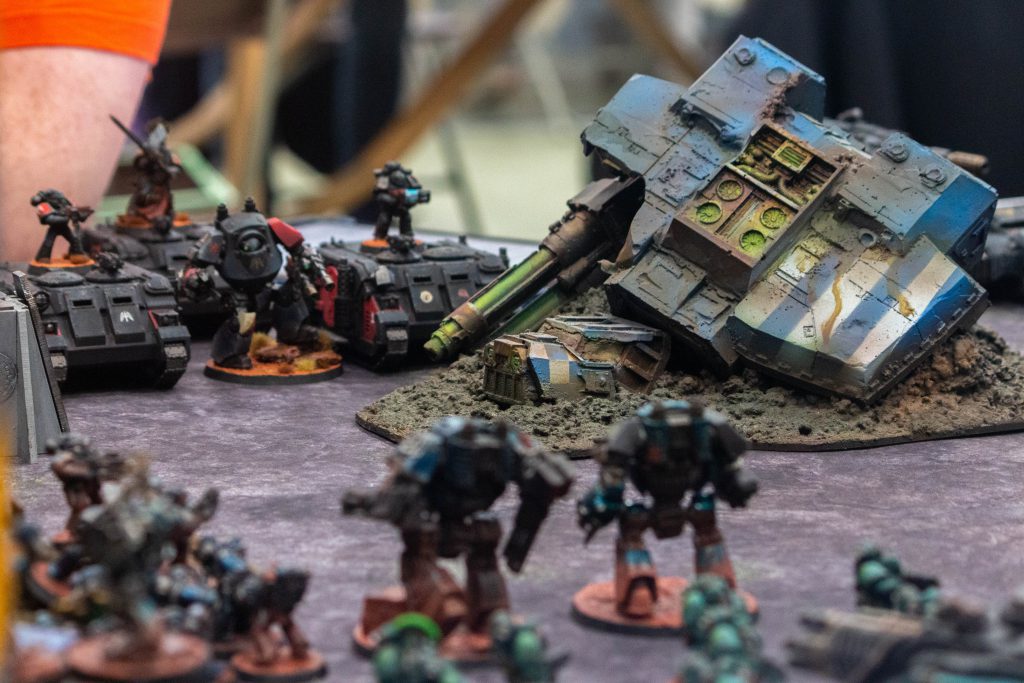
Now let’s look at movement and mobility:
- 5″ or less movement: This unit is slow. You’re going to struggle to get it in position and you need to protect it from assault units.
- 8″ or more movement: This unit is fast. You can move it around without worrying too much about it, and you can get it to different parts of the battle quickly and efficiently. You want your assault units to do this, or to have a transport that can, preferably.
- Terrain avoidance: If a unit can ignore the effective of terrain it’s inherently more mobile. Death Guard get this just for free, but for everyone else you’re looking for Move Through Cover, Anti-Grav or something similar.
- Unconventional Deployment: Deep Strike, Flanking Assault, Infiltrate, Scout, etc – anything that lets you do some movement either pre-game or allows you to skip over movement you’d otherwise need to do.
- Weapon range of more than 24″: It may seem odd to think of weapon range as a mobility factor, but the longer the range of your guns the less you have to move and the easier it is to find targets. Consider your movement + range as your “effective threat range”.
- Barrage weaponry: Equally, if you can shoot things you can’t see, you don’t need to move to get line of sight.
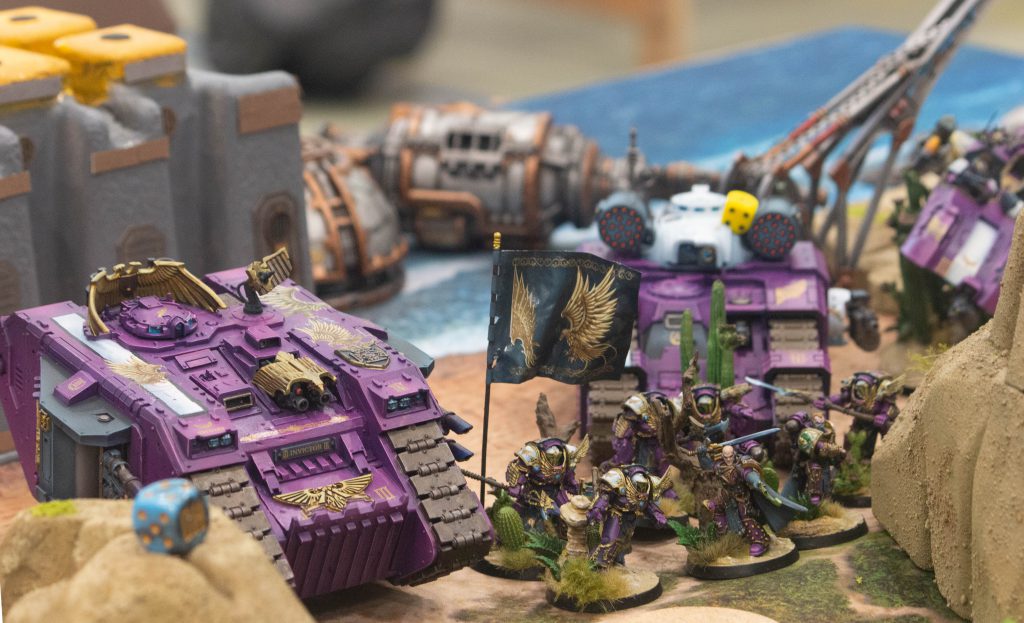
And finally just one more, a special one that sits out on its own:
- Line: If a unit is Line then it can hold objectives. This is often how you win games, so a unit being a Line makes it more valuable in addition to any other trait. However it’s most valuable in combination with other good traits – think of Line as a multiplier of effectiveness. An elite unit that’s tough and deadly and mobile is made even better if it can also hold and score objectives.
Assessing a Unit
So how do these things go together? How do we assess a unit’s efficacy based on these properties? Well, let’s start by looking at an example.
Let’s consider the Tactical Squad. The basic stat line tells us that this is an incredibly average unit – Toughness 4, 3+ save, etc is the baseline we’re often comparing to. However there are a few quirks. A sergeant can be armed with some better assault weaponry, but the unit as a whole is never going to achieve any of the properties we’ve outlined for being good in assault against elites – the sergeant might achieve something in a challenge, and that’s basically why you give them the optional weapons, but otherwise they’re firmly stuck in “mass anti-infantry attacks” mode for their assaults.
They can have between 10 and 20 wounds, so how many models we buy directly effects if this is a low-wound fragile unit or a high-wound tough one. At 20 models with Fury of the Legion and rapid fire they’re also definitely shooting enough to be considered “mass anti-infantry attacks”. They also have Heart of the Legion which means on objectives they get a FNP (great) and they’re Line so you want them on objectives.
So in analysis we have an unremarkable unit which, at 10 marines, is pretty fragile with short range mass anti-infantry attacks but does have Line and is tougher on objectives. That means we want to give it some way of getting to those objectives – a Rhino transport, for example, which has enough mobility to achieve it. At 20 marines it becomes a more convincing force in of itself – volume shooting, volume attacks in assault, quite tough, Line with that added resiliency on objectives. You probably want to run this larger version of the unit with something to buff their assault attacks because you have enough of them the odds are likely to matter more.
Which leads us to two varieties of tactical squad we might want to run: smaller units in transports with minimal upgrades and gear, and larger squads with a melee upgrade that can offer more serious opposition. And these are basically exactly how people run this unit.
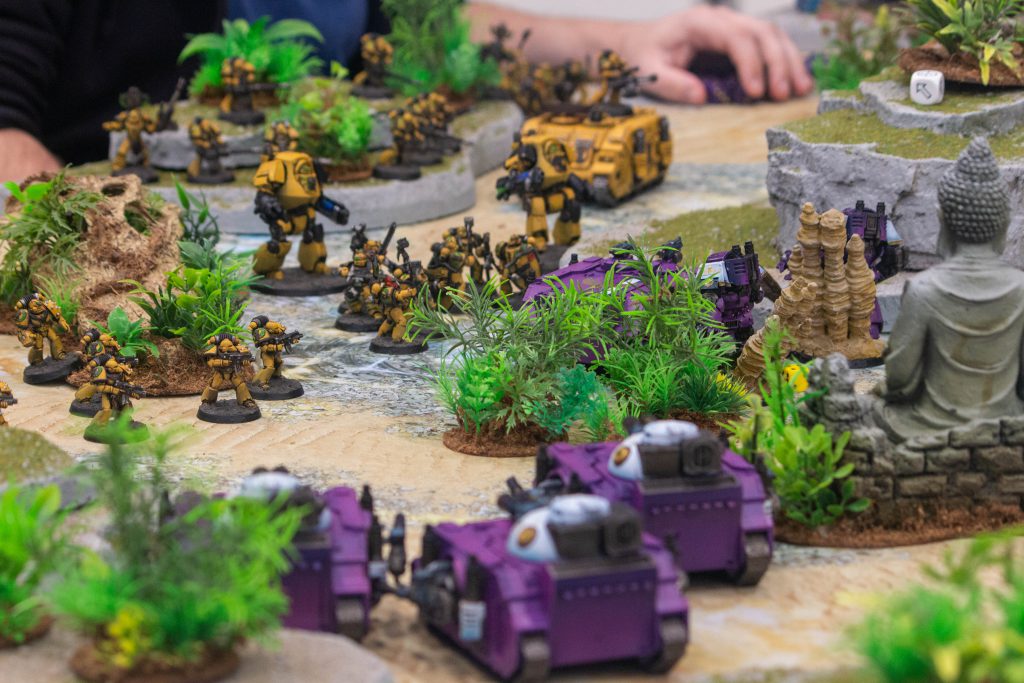
Army Roles
When we come to build an army we need to consider what “role” each unit plays. It’s not enough to look what slot in the Force Organisation Chart they’re in, because different units in, say, Elites, can be radically different. So we need an army able to take on a number of different roles, and be able to handle a variety of possible threats. In particular we need:
- Objective Holders: Units with Line that are fast enough to get to an objective, and then tough enough to stay on it and score it.
- Anti-Infantry Attackers: Units with Mass Anti-Infantry Attacks that can clear large units of lower-quality models.
- Anti-Heavy Attackers: Units with Anti-Heavy Attacks that can destroy heavy units with multiple wounds and 2+ saves.
- Anti-Tank Attackers: Units with Anti-Tank Attacks that can destroy vehicles, including those with AV14+.
- Tarpits: Units that are tough which can hold up, delay or stop enemy units. This includes by drawing their fire and surviving, and thus taking up the attention of the enemy.
- Rangers: Units that are fast, mobile, or otherwise able to get into position (including via unconventional deployment) to threaten units that would otherwise be inaccessible.
Many units in your army will combine these roles. Tactical Squads are, as we saw above, both Anti-Infantry Attackers and Objective Holders. As a more unusual example, Lernaean Terminators (the specialist terminators for the Alpha Legion) are Objective Holders (they get Line) and Tarpits, and then their weaponry can be selected to be some combination of Anti-Infantry and Anti-Heavy.
In general, at 2500-3000pts, you need to fill out these roles so that you can cover the bases of the missions at hand. 3-5 Objective Holders is pretty essential, just so you can effectively score in many missions. Beyond that you need to try and anticipate what you’re going to run into. You will encounter heavies and vehicles, so you need at least some anti-heavy and anti-vehicle attackers. Generally you can expect 3-5 units of heavies and/or 3-5 vehicles in a full size list (this obviously varies enormously), if your opponent is playing a relatively balanced force. Generally, unless you have an exceptionally effective and tough unit able to perform those roles, you want that many units that are anti-heavy and/or anti-tank. If they can be both anti-heavy and anti-tank then you have a huge advantage, because you need fewer of them.
This is why lascannons are so popular.
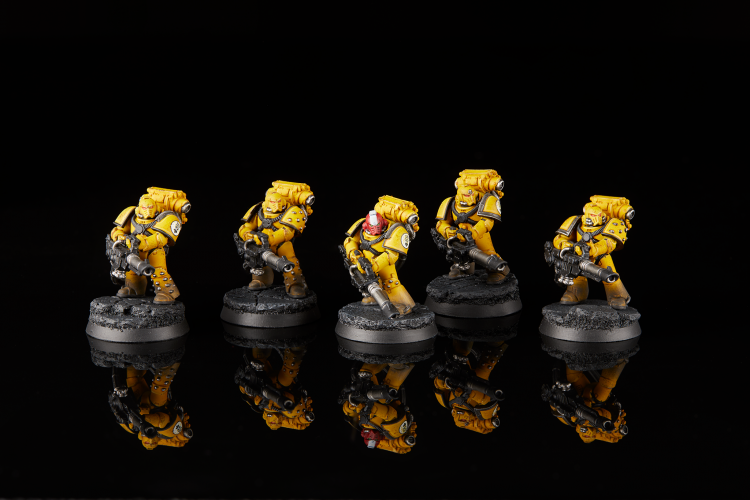
The other thing to consider is list efficiency. The most roles your units can take on, the most of that role you can include in your force. The most efficiently you can get a viable unit for a role (ie the less points you spend) the more you’ll be able to field. If you can get a unit that’s comparatively cheap in a role (say a tarpit unit with T7, a 2+ save, an average number of wounds and a 5+ invulnerable save) and that unit can also fill another role (like, for example, having a s9 Brutal 3 ap2 melee weapon) or even two (say, add a 2 shot multi-melta) then that unit becomes exceptionally valuable and you can afford to take a bunch of them, or take a bunch of other units and not worry too much about their efficiency.
This is why contemptor dreadnoughts are so popular.

The perfect list is one composed of bunch of tough, fast units able to deal with mass infantry, heavy target, vehicles and which is an objective holder.
This is why Custodes are so goddamn scary.
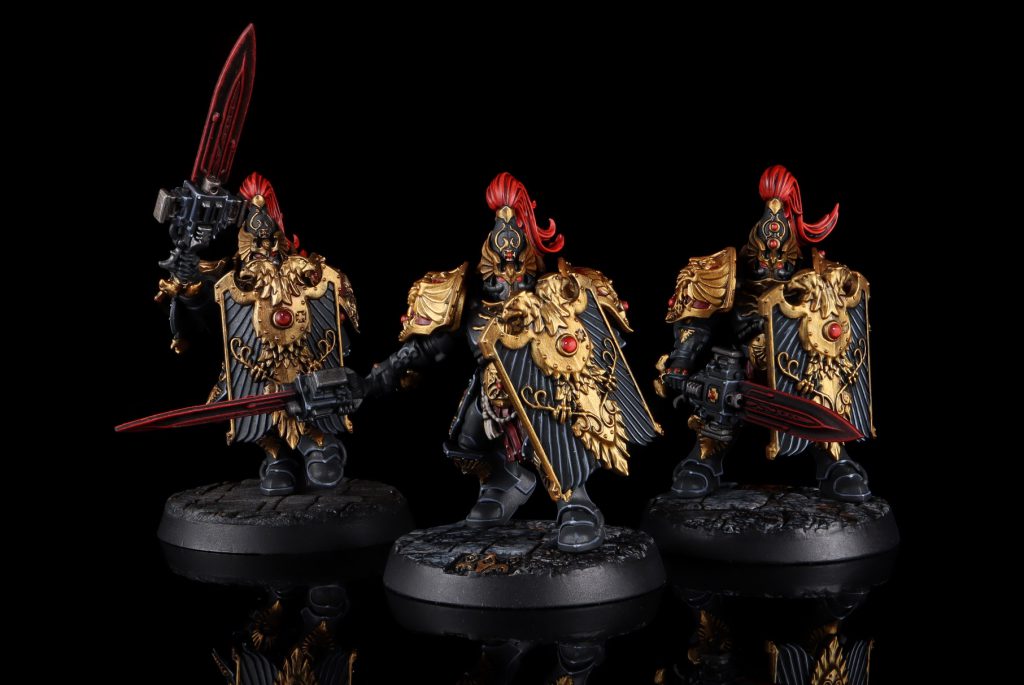
Skewing the Conclusion
This is all why “skew lists” are so devastating. This is a list, like Custodes, that can build all of those roles into a particular kind of unit, and present a single kind of target to be engaged with. Skew lists present an enormous challenge to list building, and we’ll dive into exactly how and why next time. Comments or thoughts? Let us know in the comments below or at contact@goonhammer.com.


